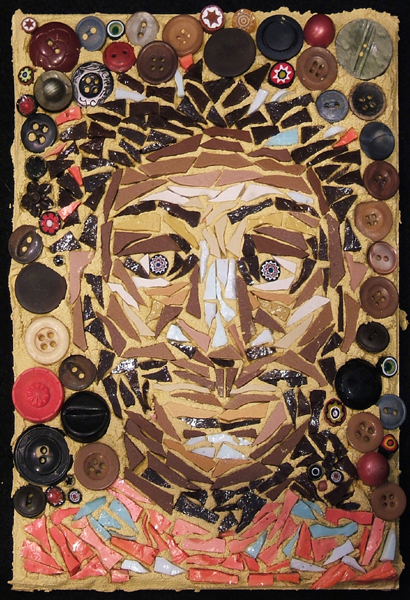But, I Know What I Like
We have all either heard it said, or have said it ourselves, “I don’t know much about art, but I know what I like.” This sounds a bit like admitting that we don’t know much about our favorite drinking buddy; what he is like as a husband and father, or son, or friend, but we sure have some good laughs when we’re at the bar together. As long as he doesn’t involve us in an event in which the police are quite interested, only knowing what is on the surface of our buddy works out pretty well. It does not, however, further the cause of friendship or the satisfaction of exploring the mind, body, and emotions of another human being.
I am an online member of a group of mosaic enthusiasts who are willing to critique each others’ work, and the time spent examining, thinking about, and finding the words to describe what we see in another’s work is invaluable to our own understanding and process of discovery. It is also beneficial to hear the comments about our own work as seen from fresh perspective.
Over the years since I graduated from art school, I have paid close attention to the words people use when they are talking about the art produced by others. One type of comment which has its place, but not in art criticism, is the phrase, “I like…..”. Equally useless in art criticism is, “I love….”. These phrases are wonderful for boosting the confidence of a friend, or for giving the recipient a quick referendum of what pieces are likely to sell to which audience. But, they don’t give the artist insight into the specific effects that each choice he has made during the creation of the work have on the meaning or aesthetic success of the art.
In school, I was taught that our personal taste has no place in appreciating and discussing someone else’s work. I believe that I have observed the truth of this lesson repeatedly. For example, there is plenty of art in the world today that, not only is unpleasant to look at, but is intended to be unpleasant in order to express a point. This fact may not detract from the value of the statement being made through the art. The fact that I cannot say, “I really love how you…..” in reference to this type of piece does not take away the importance of the work.
Equally, I might be able to say about a mosaic full of colors that are pleasing to me, and sprinkled with shiny things, “I just love…”, and I might even want to buy it to live with every day of my life, but it might not have been a production that helped the artist grow into new potential, and it might not even help me be more fully human by living with it. (I feel that there is a little bit of bird in each of us- unavoidably attracted to pretty, sparkly, metallic things.)
Sometimes the point of a piece of art is aesthetic beauty, and the more spectacular, the better. Sometimes the point of a piece of art is the exploration of dark and frightening emotions. Sometimes art makes a strong political statement which stimulates the thoughtful viewer to have new ideas. Sometimes art is meant for pleasing decoration. Always expecting art to be predictable, superficially pleasant, and comforting is not the shortest road to developing into the individual or the society that we are capable of becoming.
We enjoy our “drinking buddies” up to a point, but to be fully capable adults who attain our full humanity, we need significant, growing, intimate relationships with true friends, spouses, and family members. Likewise, being fully alive in society means being open to seeking out and understanding the artistic expressions around us. Visual arts, literature, poetry, music, dance, theater- all the arts, make our mental and spiritual lives richer and more satisfying if we are bold enough to explore what is here for us to experience.
The Woman at the Bus Stop
9″ x 6 3/4″. Copyright 2009 by Lynn Bridge
Take a look at my latest completed mosaic. There is nothing pretty about this piece, although I did make it with a certain amount of competence in understanding how faces are put together. This unfortunate woman even has a small rodent staring at us from her shoulder. It is meant as a psychological study, trying to uncover the mental state of the woman I saw at the bus stop. Even though there is something very strange and wild about her, I hope she also represents that confusion and the unsettled feelings that can arise in anyone from time to time. I hope that in some way, the image of this very specific human being has also found the universal.


it is very good, i see the expressions in people when they are eating
you know, that unfocused stare
I’ll take the glazed lemon tart, please. So, does that unfocused stare occur before, during, or after the meal? 🙂 I hope your stint as head chef has been satisfying.
After reading your words about understanding what a piece of art is trying to communicate, I will to hesitant to stop at the simple words, “I like that piece”.